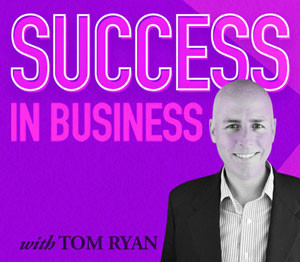 I’m a process guy. I like to break down complex systems into their most basic structures, looking for places where things can be improved or made more efficient. In my work with entrepreneurs and small businesses, I often see the biggest process bottlenecks in the early stages of sales process. And there’s no place this is more obvious than in how a business approaches their channels.
I’m a process guy. I like to break down complex systems into their most basic structures, looking for places where things can be improved or made more efficient. In my work with entrepreneurs and small businesses, I often see the biggest process bottlenecks in the early stages of sales process. And there’s no place this is more obvious than in how a business approaches their channels.
A channel is simply another way of saying “Places to sell your stuff.” You can also look at channels as a series of branching paths, almost like branches on a tree, with each one reaching out to a specific kind of customer. Just like a tree, you can often get the best results by knowing which branches to prune.
Right off the bat, most businesses need to make a big decision in which branch to prune. Will they focus on direct or indirect sales? Direct sales means selling directly to the customer or end user, while indirect sales means that your customers aren’t the final customer, and instead they sell to the final customer as middlemen.
Most B2B companies have a direct sales model, taking their product or service directly to other businesses. Service companies and consulting companies also follow this model, as do many ecommerce stores. Crowdsourcing through sites like Kickstarter is also another form of direct sales, working directly with customers to fund a specific product. A company taking a direct sales approach may have a sales team, but it’s also possible that they may not, opting instead to automate their sales process through a website.
Indirect sales, on the other hand, is mostly a matter of selling to wholesalers and retailers. You’re selling a product to someone who will mark it up and sell it to someone else. This can also take the form of selling to independent reps, working with wholesalers or distributors, or even selling to franchisees.
So, how do you figure out which approach is right for your business? The answer isn’t always as obvious as you might think. Countless companies have struggled to find success using direct sales, for instance, only to find that it’s easier and more profitable to work with a distributor. Other businesses have seen profits skyrocket after taking the middleman out of the equation. The important part is finding the model that works best for the business and their customers.
To help, here are five key questions for determining the best sales channel for your business
- Do you have any traction yet? Have you been able to go out and make sales yourself? By understanding how the market reacts to your product or service, it’s much easier to understand how it will react if someone else is trying to sell it for you.
- Can you afford to sell at wholesale margins? If you think your product will sell for a dollar, is it still profitable to you if you sell twice as many to a wholesaler at fifty cents? If your cost is 10 cents, it might be great. If your cost is 45 cents, it’s probably not.
- Do you have the resources to sell yourself, and do you want to? Do you have the ability to build and manage an in-house sales team in addition to the other day-to-day operations? Or does it make more sense to reduce your profits to have a third party handle those sales so that you can focus on the other parts of the business?
- Who is better able to reach your customers? Going through someone else to sell to your customers might make sense if they have better reach. You might make a greater per-sale profit selling to individuals, but a distributor or wholesaler might could have exponentially better reach by putting your product in retail stores across the country.
- Will your products successfully sell without you? If your product is new and disruptive, you might have a strong appeal to a niche customer base. At the same time, the broader customer base might not be ready to try your product, resulting in a ton of unsold product. In that situation, it might take years of customer education before working with a wholesaler makes sense.
Now that we’ve covered the foundation of a successful sales model, it’s time to look at the economics of your business, starting with the costs of generating a sale. We’ll explore that topic in part four.
